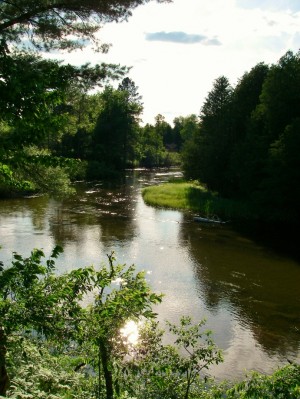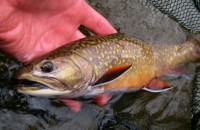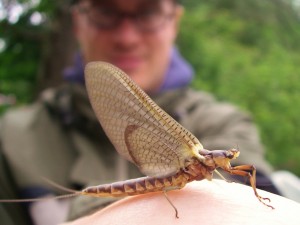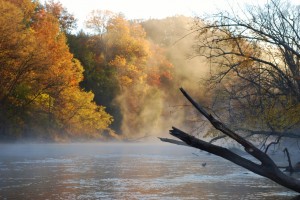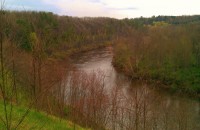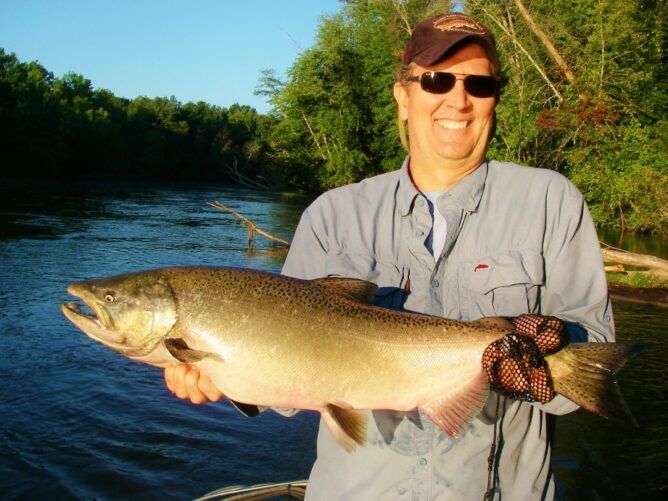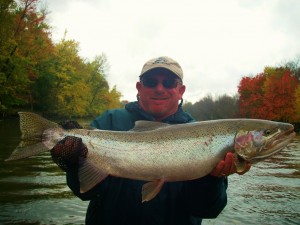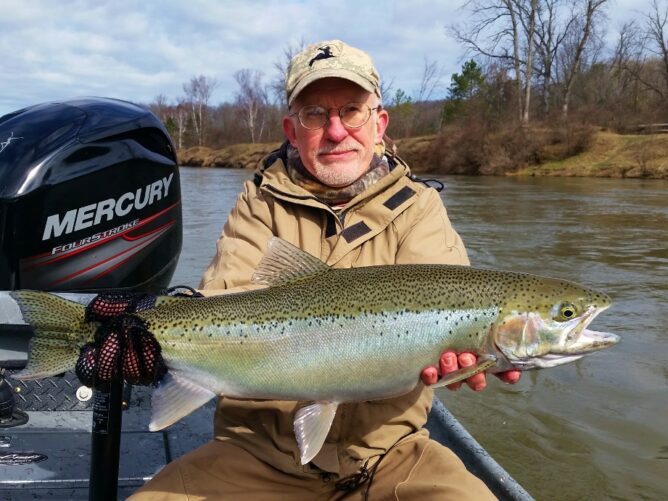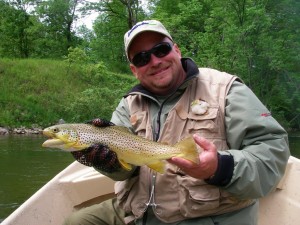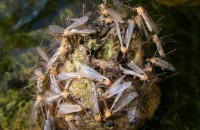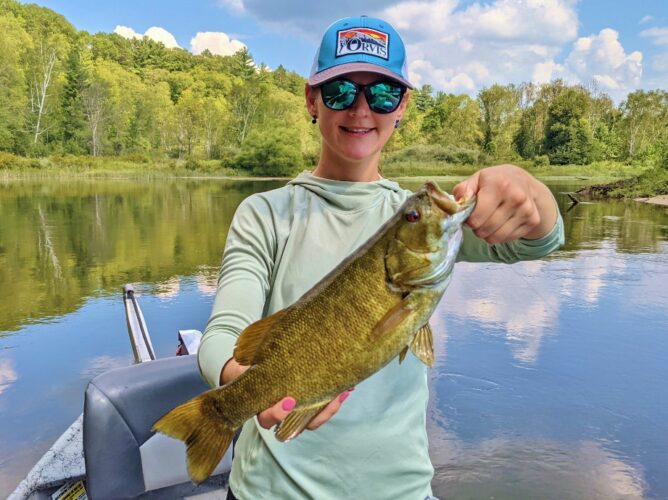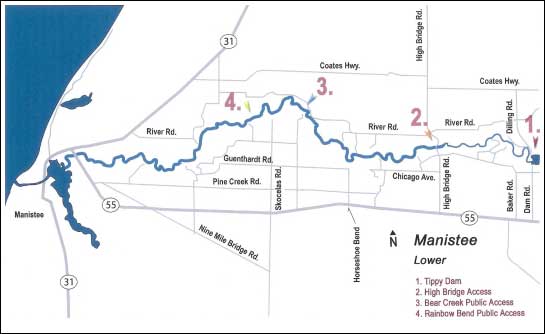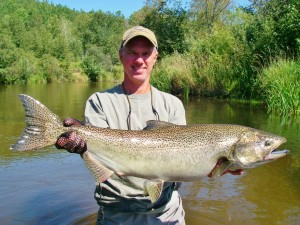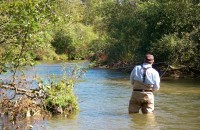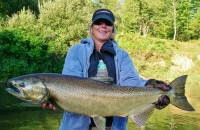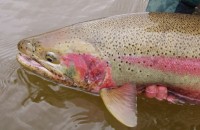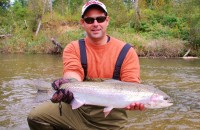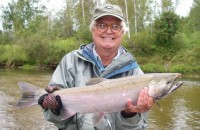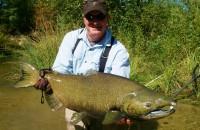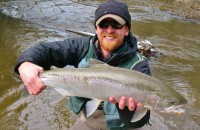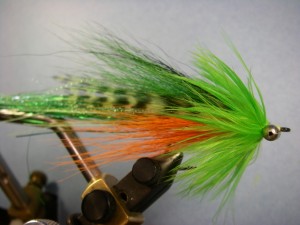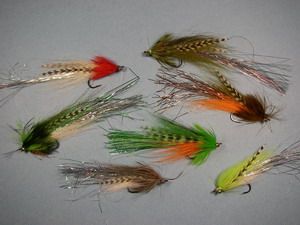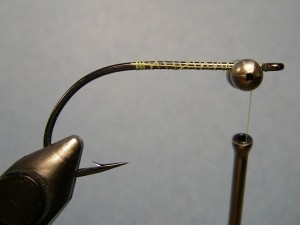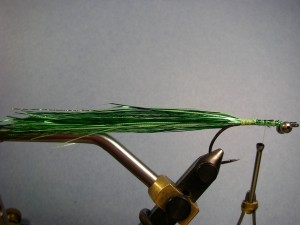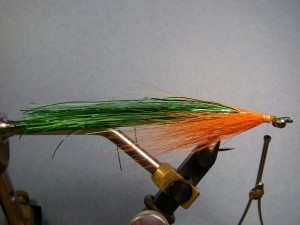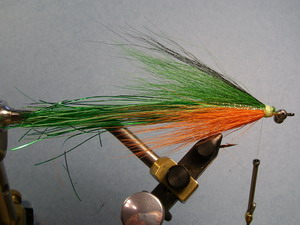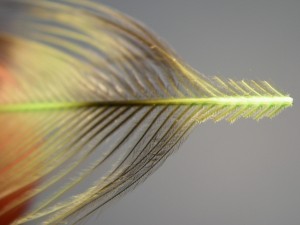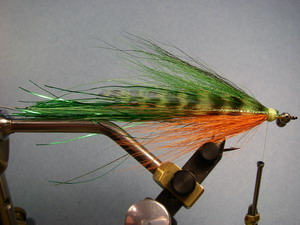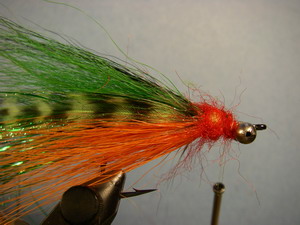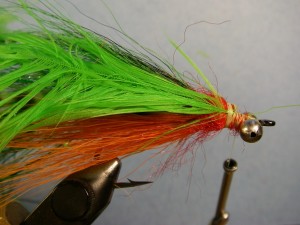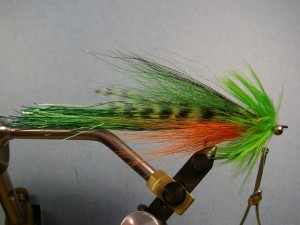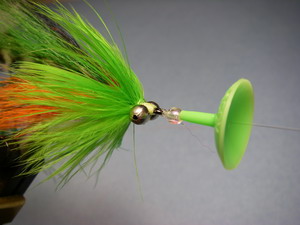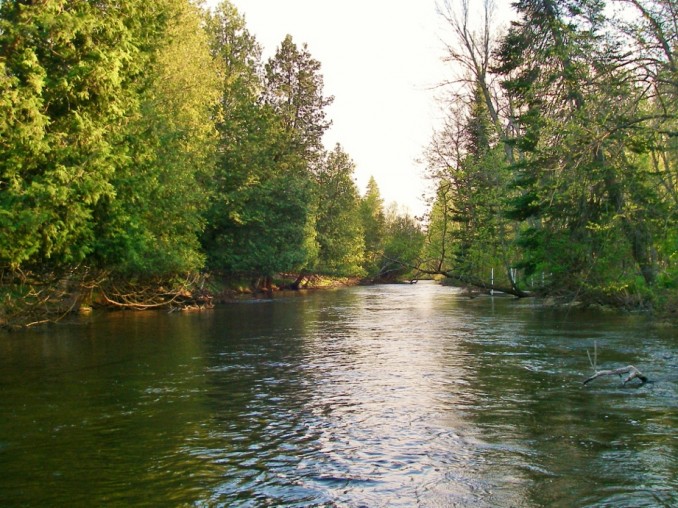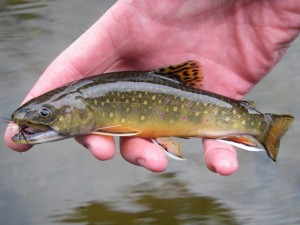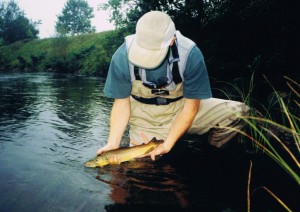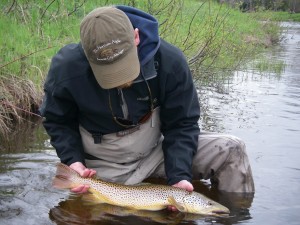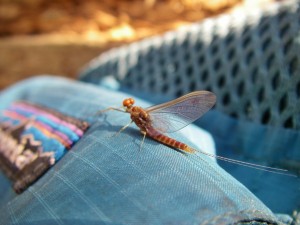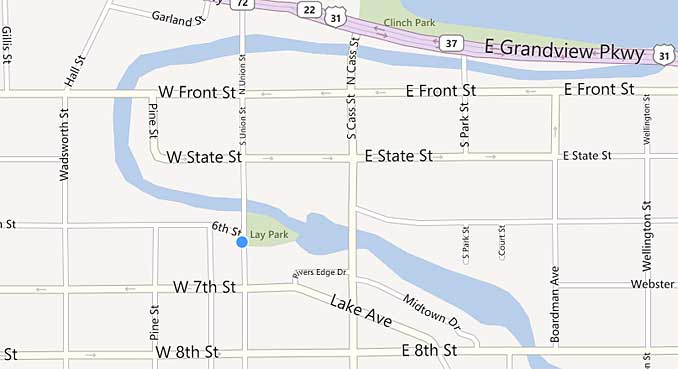The upper Manistee River is where we do the majority of our trout fishing. Like a big spring creek, the waters of the “Mana” tend to run clear due to the sandy soil around it. With sections of gravel and riffles, sand bottoms and some silt beds the Hex nymphs call home; there are simply lots of different bugs that hatch on this river.
Majority of the fish in this section of water are Brown Trout and Brook Trout with the occasional Rainbow Trout. Ever seen a Tiger Trout? This is a natural occurring hybrid of a brook trout and brown as both spawn in the fall. These fish are rare but they do exist in the Upper-Manistee.
The flows of the Upper Manistee river are moderate and depth changes – common sense will tell you what side of the river to be on, possible places to cross and also what side will most likely to hold the fish.
Structure includes submerged logs, overhanging trees, deeper holes and combinations of them all. Just when you think there aren’t any fish in the river, you will either move a significant fish out of a holding lie or witness a hatch that suddenly turns the river into a jacuzzi with rising fish. Don’t ever give up, just try something different.
Where
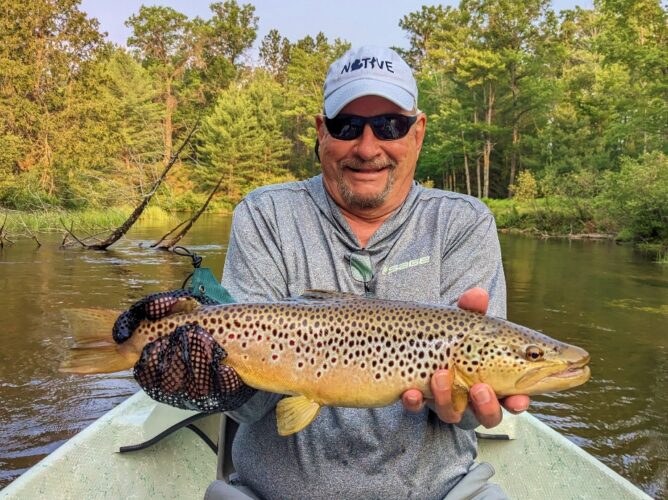 The CCC bridge and the CCC Bridge campground are focal points of the fly fisherman who fishes the Manistee. The bridge is the lower boundary of the “Flies-Only” section of water with M-72 being the upper boundary. This water is open year round and has special regulations.
The CCC bridge and the CCC Bridge campground are focal points of the fly fisherman who fishes the Manistee. The bridge is the lower boundary of the “Flies-Only” section of water with M-72 being the upper boundary. This water is open year round and has special regulations.
Much of my guiding and fishing takes place from M-72 downstream to the Rainbow Jim’s and I have been known to fish other sections when conditions are right.
Come float sections of water on the upper Manistee and experience the fishing the water around Yellow Trees, the Miracle-Mile, The Settlement, King Trout Ranch, Burnt Cabin (BKZ), CCC Bridge, Dutch John, and Smithville. The Upper Manistee offers anglers a variety of water and fishing conditions for all experience levels.
Experience not only great fishing, but a river that is not over-developed or over-used. Because of it’s remoteness, canoe and kayak traffic is not a problem on these sections of river like they are on other areas or rivers in the region.
Located about 40 miles east of Traverse City and 25 west from Grayling.
See the map at the bottom of this page for directions.
Manistee River Hatches
The best hatches on the river and the ones to fish are many. Starting in April, the early black stones get going, and beyond that it only gets better. From the end of April through mid-May Hendricksons are the first prolific mayflies to emerge and often are mixed in with Black Caddis (Mothers day Caddis). Next come the Sulphurs, Tan Caddis, March Browns, Black Quills / Borchers Drakes, Little Yellow Sallies, and Mahogany Duns – all in the month of May and into June.
Read about some of the great insects that hatch prior to the Hex Hatch »
The big bugs of June are what dry fishermen get excited 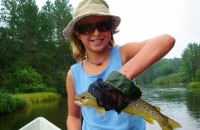 about: Brown Drakes, Isonycias, and The Hex. Into July and August the Manistee experiences Tricos, Olive Caddis, Light Cahills, and more Isonycias.
about: Brown Drakes, Isonycias, and The Hex. Into July and August the Manistee experiences Tricos, Olive Caddis, Light Cahills, and more Isonycias.
Beyond these emerging aquatic insects anglers will want to pay close attention to the terrestrials: ants, flying ants, grasshoppers, beetles and more. Size does matter on these bugs – try to match what you see on the streamside vegetation or on the water and try larger and smaller if you aren’t having success. Throughout the year anglers can expect to see lots of Blue Winged Olives (BWOs) in sizes ranging from 16 to 22; these are a staple for just about 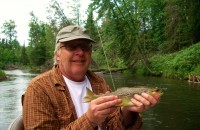 any trout fisherman — and trout!
any trout fisherman — and trout!
Obviously there are more types of bugs that come off on this river, but the above mentioned are the ones any fly angler and fly tier should be most concerned with.
For more information regarding our hatches, check out the Hatch Chart.
Streamer Fishing on the Manistee
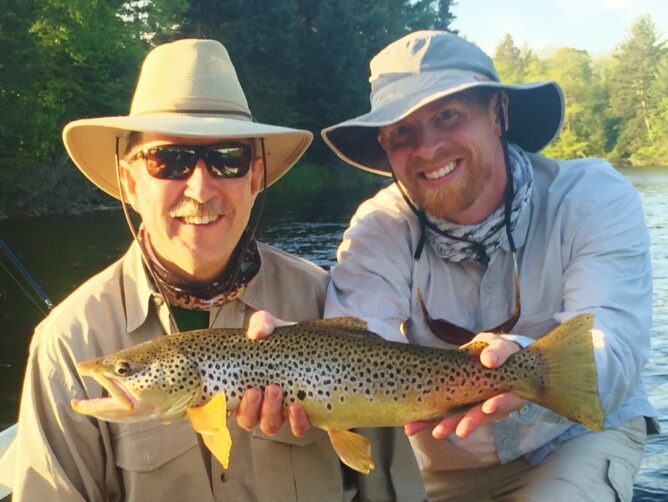 Modern day streamer fishing for trophy sized trout was developed on this river by its pioneer Kelly Galloup, former owner and guide of the Troutsman fly shop once located in Traverse City. As a way to catch big fish on those bright days without a hatch or when trying to target big brown trout, streamer fishing gives anglers a great technique which has become not only popular here on the Manistee and other local rivers, but has caught on in popularity throughout the other regions of the country and trout rivers.
Modern day streamer fishing for trophy sized trout was developed on this river by its pioneer Kelly Galloup, former owner and guide of the Troutsman fly shop once located in Traverse City. As a way to catch big fish on those bright days without a hatch or when trying to target big brown trout, streamer fishing gives anglers a great technique which has become not only popular here on the Manistee and other local rivers, but has caught on in popularity throughout the other regions of the country and trout rivers.
Beyond effective, this method also is exciting to watch a fish over twenty inches pounce on the fly before your eyes. Not to give the illusion that catching a fish is easy using streamer techniques, but any angler fishing this river will want to be prepared to cast some big flies (up to six inches long) to pull that lazy fish out of his lair when surface activity is null. Try fly patterns that imitate: sculpins, chestnut lampreys, smaller trout, chubs, and of course that generic fly that not only will move some water, but simply looks too good not to eat. Look to streamer fish all-year with the best times being April-June and September-November.
To learn more about streamer fishing, read Tips For Better Streamer Fishing »
Directions and Map
The CCC Bridge is located about 40 miles East of Traverse City, 20 miles South East of Kalkaska and 25 miles West of Grayling, Michigan. Anglers fishing the Au Sable River in Grayling often spend time also fishing the Manistee.
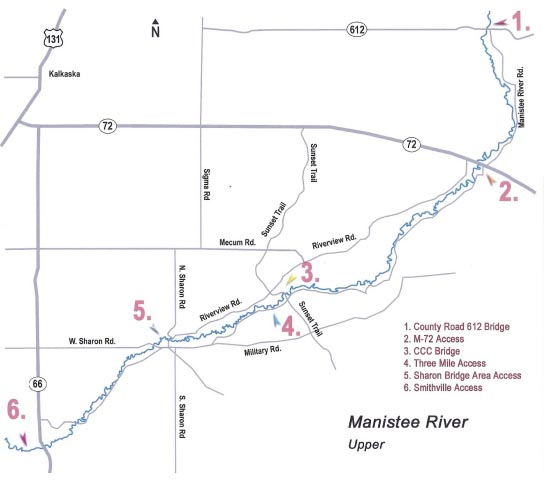
Map of the Upper Manistee River (above Tippy Dam)

